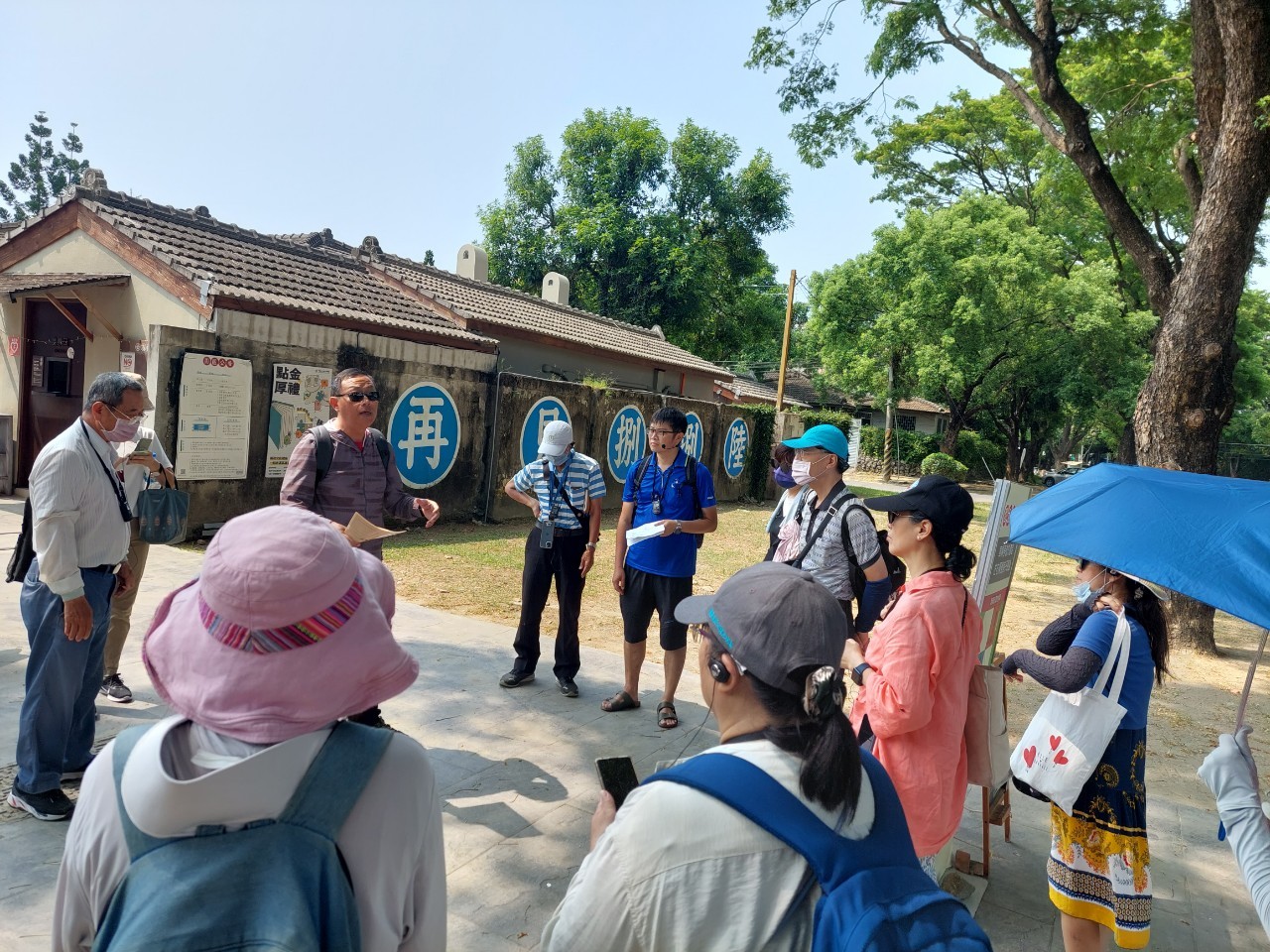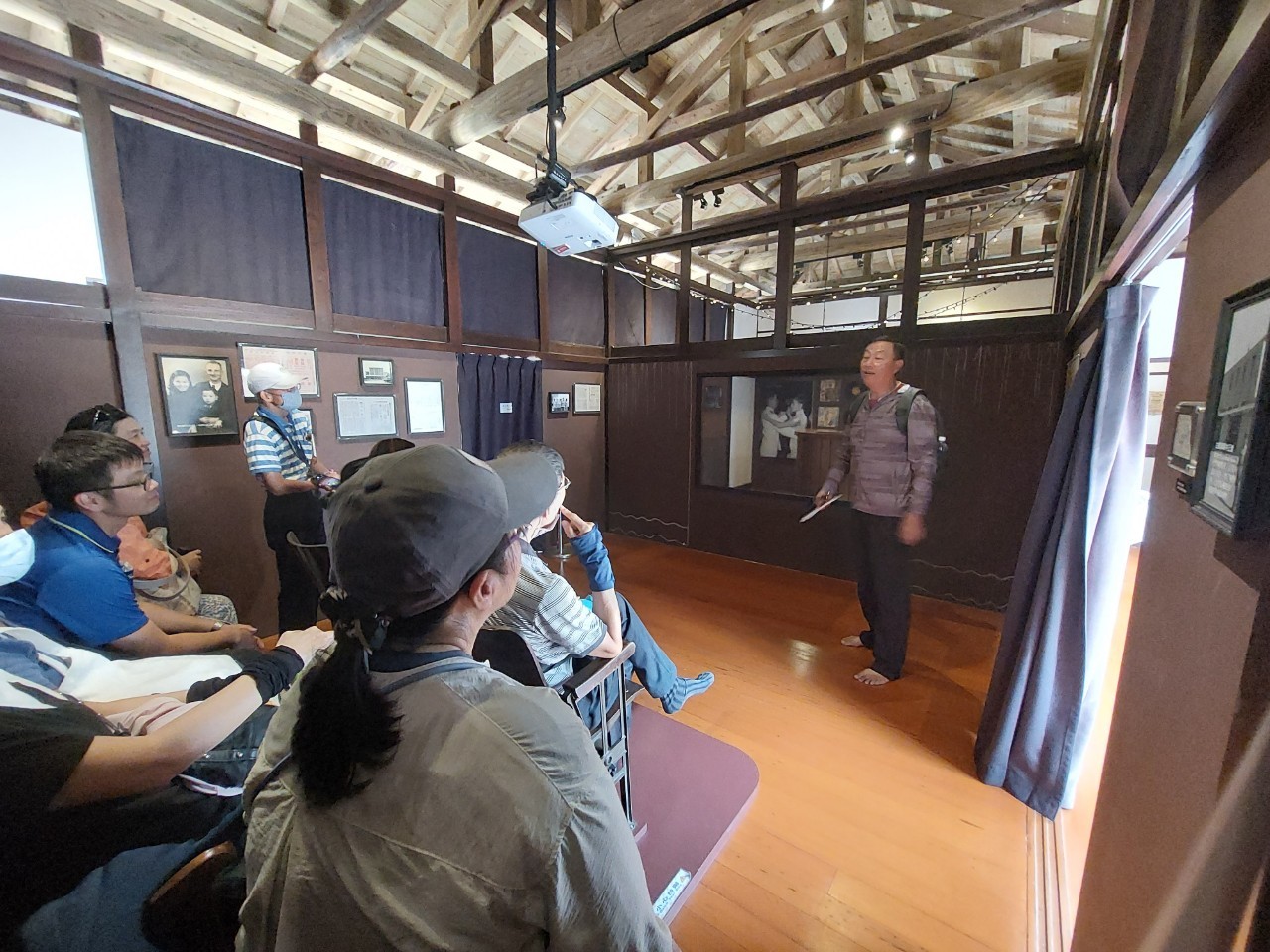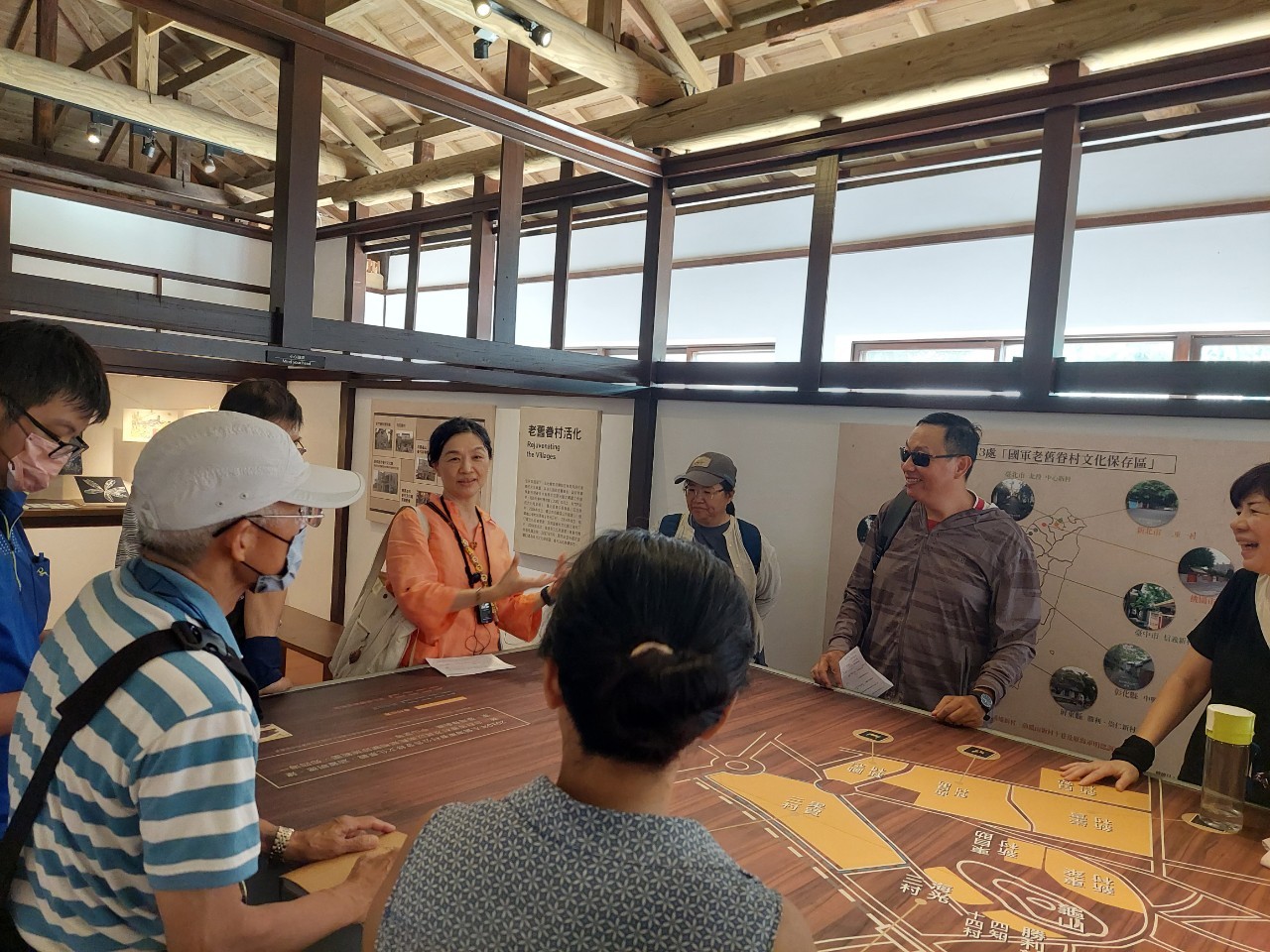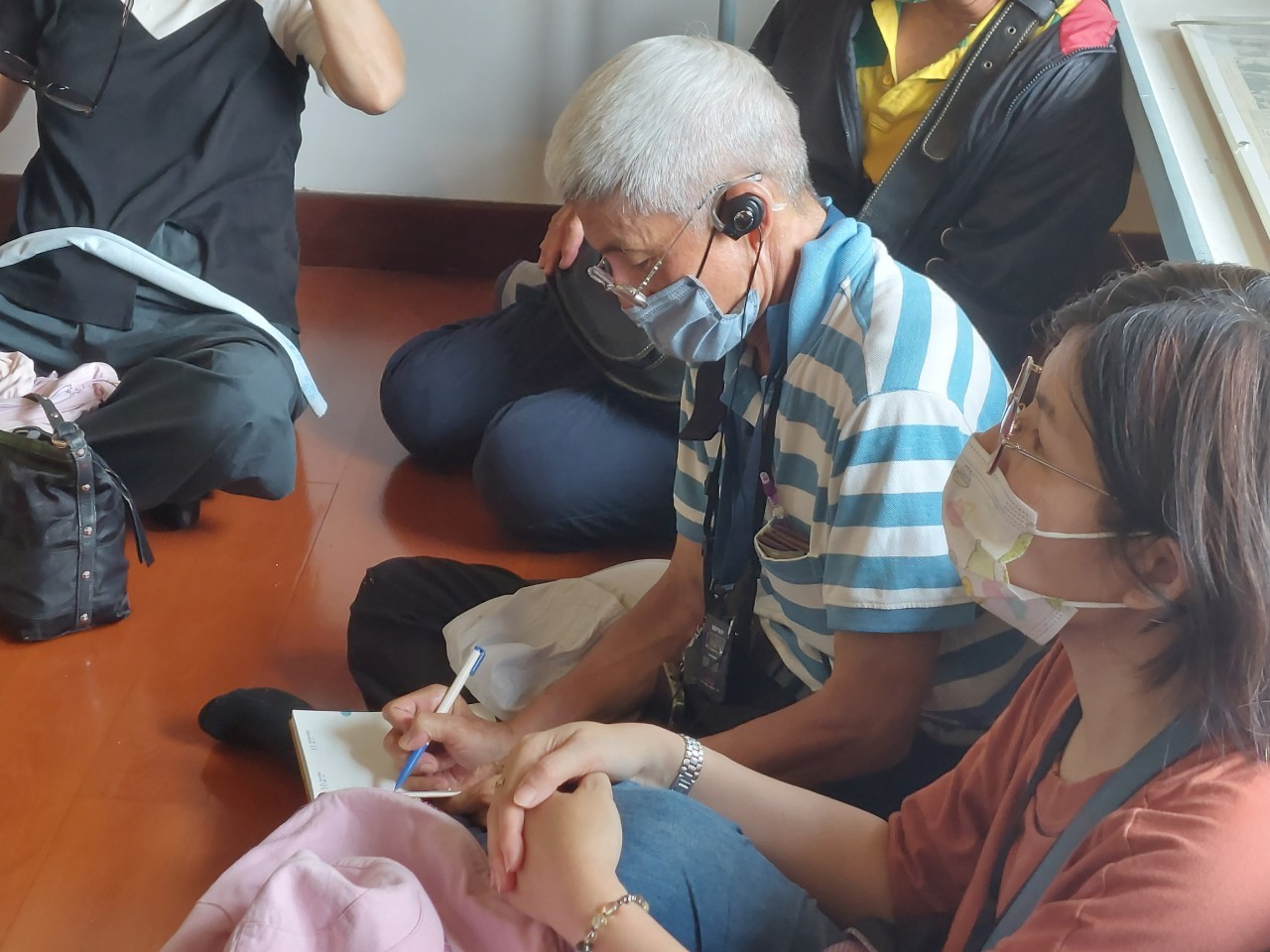【 OUR TOWN學生團隊成員 林佳宜、蔡子容 報導】
本次的眷村之旅由外語導覽社群的龔書永老師,為社群成員講解高雄捌捌陸眷村的歷史背景與獨有文化,同時也讓社群成員實際帶領活動參與民眾走訪「再見捌捌陸-臺灣眷村文化園區」,透過生動、活潑的講解方式,帶領民眾了解眷村的歷史與軼聞,為整體走讀活動增添了別樣的趣味性。
The military dependents' village tour was led by Professor Gong Shuyong from the Foreign Language Tour Guide Community. He explained the historical background and unique culture of Kaohsiung's 886 Military Dependents Village to community members. Additionally, community members guided participants on a tour of the "Farewell 886, Cultural Park of Taiwan Military Veteran Village," using lively and engaging explanations to help participants better understand the history and anecdotes of the villages, adding a unique sense of fun to the entire walking tour.
活動內容聚焦於眷村的由來,展覽內共有12個不同的主題,例如「序幕:國共內戰」、「遠離家鄉的日子」、「簡介:台灣的另一個族群」、「眷村對現代台灣的影響」、「什麼是眷村」、「台灣有多少個眷村」、「眷村:移民的住處」等等。其中,Luis老師也特別強調台灣眷村的獨特性,裡面的場景就如同1985年著名電影《牆外的春天》。
The event focused on the origins of the military dependents' villages, with the exhibition featuring 12 different themes, such as "Prelude: Civil War," "Home away from home...," "Introducion: One more ethnic group in Taiwan," "Impact on modern Taiwan," "What's a MDV," "What’s 886," and "Anecdotes," among others. Professor Luis also highlighted the uniqueness of Taiwan's military dependents' villages, noting that the scenes inside are reminiscent of the famous 1985 film *The Spring Outside the Fence*.
自國共內戰後,大量新移民隨著政府來到台灣,這引發了原住民的反應。無論是喜是悲,雙方都必須找到相處的方式。為了緩和本地人與外來者的衝突,來自相同地區、說著相同語言的人通常被安排住在同一區,這便逐漸形成了我們熟悉的「眷村」。這一過程使台灣文化多樣性得以發展,讓這座島嶼成為不同文化交織的熔爐,孕育出獨特的意識形態與價值觀。
After the Chinese Civil War, a large influx of new immigrants arrived in Taiwan along with the government, prompting reactions from the indigenous population. Whether for better or worse, both sides had to find ways to coexist. To ease the conflicts between locals and newcomers, people from the same regions who spoke the same language were often placed in the same areas, gradually forming what we now know as "military dependents' villages." This process fostered the development of Taiwan's cultural diversity, turning the island into a melting pot of various cultures and nurturing unique ideologies and values.
根據內政部的統計,台灣目前有近900個眷村。隨著時間推移,這些眷村有的被遺忘,有的逐漸荒廢。不過,隨著對文化的重視,部分眷村幸運地被改造為觀光景點或文創工作區,像高雄的捌捌陸眷村園區就是其中一例。前述歷史的痕跡,就如同「捌捌陸」這個名稱,既代表著國防部實際管理的眷村數量,也象徵著眷村文化在歷史舞台上的告別——「捌捌陸」,「拜拜囉」。
Before entering Shoushan, the guides specifically reminded the audience how to avoid contact with the local wildlife, particularly the monkeys, to prevent accidental injuries. Along the way, everyone passed by the habitat of the Taiwan Barbet, known for its five colors: green, red, yellow, blue, and black. During the journey, the program host, Mr. Lin Yicheng, introduced the group to the dragon scale fern. This plant, native to Southeast Asia, has a uniquely textured stem that, when gently touched and moved, feels different depending on the direction of the touch. Although its stem is not prickly, it feels both smooth and rough in different directions. The audience was also invited to touch the dragon scale fern on-site to experience its unique texture firsthand.
眷村文化在四百年的政權更迭中對我們的日常生活產生了深遠的影響。如今,我們在方言、音樂、時尚、飲食、風俗文化和傳統儀式等多個領域都能看到外來影響,使得台灣的年輕一代在更了解過去的基礎上,更能把握未來。透過這些文化的痕跡和傳承,他們能夠在全球化的背景下保持自身的文化認同,並開拓出更多可能性。這不僅是對過去的回顧,更是對未來的展望。
The culture of military dependents' villages has had a profound impact on our daily lives over four centuries of regime changes. Today, we can see foreign influences in many areas, such as dialects, music, fashion, cuisine, customs, and traditional rituals. This has allowed Taiwan's younger generation to better understand the past while being more capable of shaping the future. Through these cultural traces and heritage, they are able to maintain their cultural identity in the context of globalization and explore new possibilities. This is not only a reflection on the past but also a vision for the future.

Luis老師於再見捌捌陸門口向活動參與民眾說明走讀重點(楊璦菱 攝影)
Teacher Luis gave participants the intro of tour

民眾於會館內專心聆聽導覽(楊璦菱 攝影)
Participants focused on tour

社群學員利用會館內的地圖向民眾介紹眷村(楊璦菱 攝影)
Tour guides told stories of MDV and explained the details of the map

參與民眾專心做筆記(楊璦菱 攝影)
Participants took note
